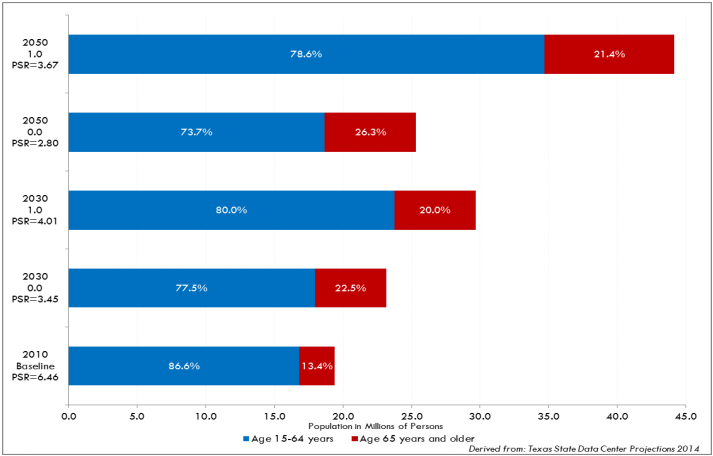Capable of Support?
“Migration’s contribution to changes in the population age structure can have important consequences for the future,” the report reads, citing a popular measure for gauging the effect of an again population, called the Potential Support Ratio (PSR), which is the ratio of working age people (15 to 64 years old) to the elderly population (65 years old and older). A higher PSR is preferable, because, as the report states: Populations with a greater number of workers per retiree are more likely to have an economic structure to provide support for the aging population.
In 1950, the U.S. supported a robust workforce, recording a PSR of 7.8. But in the 60 years following, the ratio of working age to elderly populations declined 33 percent to 5.1– a result of maturing Baby Boomers. In 2010, Texas’ PSR was above the national average at 6.46, representing a population where 86.6 percent were of working age, while 13.4 percent were passed the age of retirement.
Considering again migration vs. natural increases, researchers ran two separate models to estimate how the PSR would shift in the next 15 and 25 years. In both calculations, researchers found Texas’ PSR dropping significantly (see the graph below for full results).
Keeping 2010 migration trends, the state’s working age population is estimated to make up 78.6 percent of the total population, while seniors will have gained a 21.4 percent share, amounting to a 3.67 PSR. The ratio is even more skewed when assuming natural increases.


Interesting!